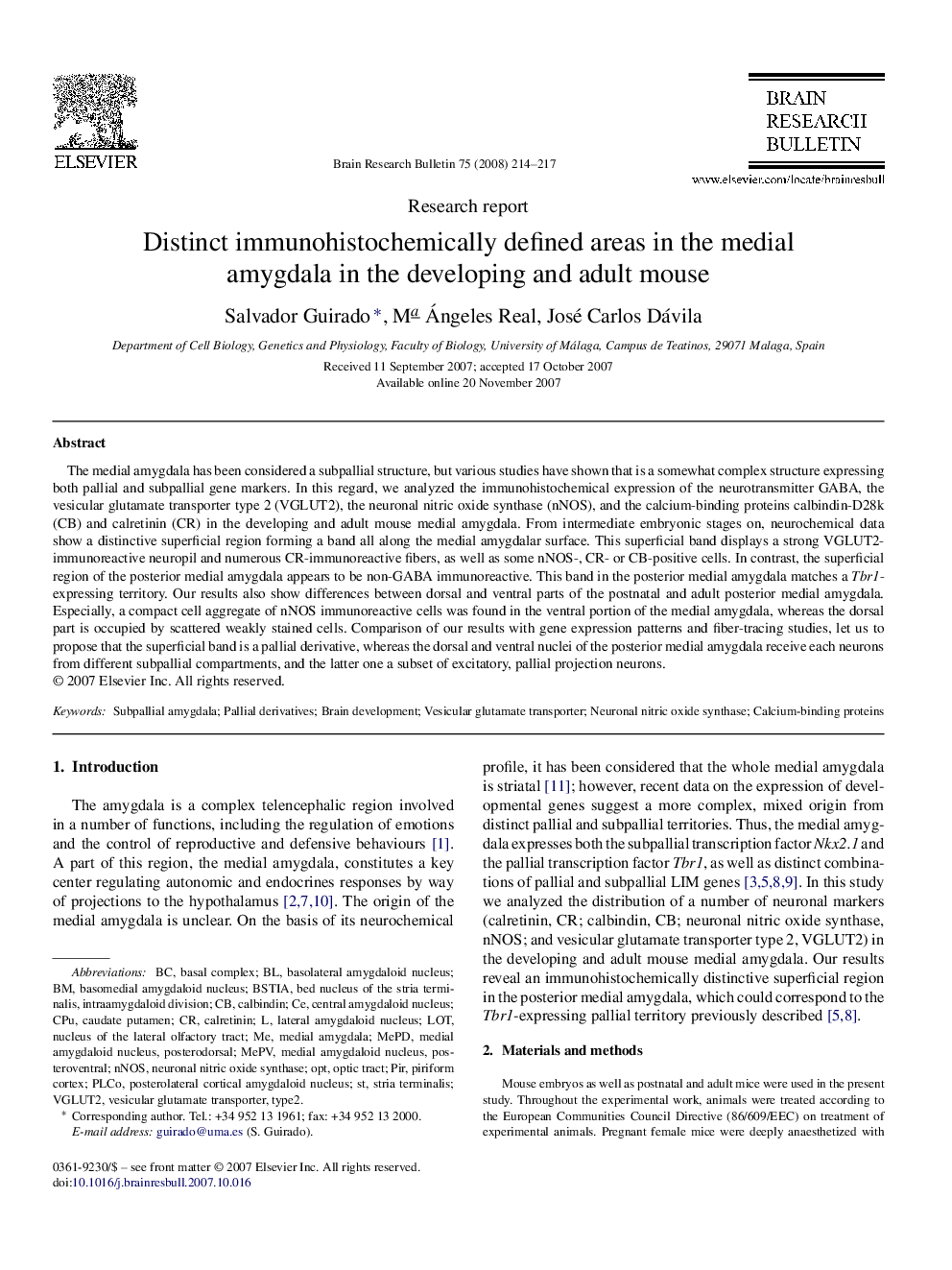| Article ID | Journal | Published Year | Pages | File Type |
|---|---|---|---|---|
| 4319667 | Brain Research Bulletin | 2008 | 4 Pages |
The medial amygdala has been considered a subpallial structure, but various studies have shown that is a somewhat complex structure expressing both pallial and subpallial gene markers. In this regard, we analyzed the immunohistochemical expression of the neurotransmitter GABA, the vesicular glutamate transporter type 2 (VGLUT2), the neuronal nitric oxide synthase (nNOS), and the calcium-binding proteins calbindin-D28k (CB) and calretinin (CR) in the developing and adult mouse medial amygdala. From intermediate embryonic stages on, neurochemical data show a distinctive superficial region forming a band all along the medial amygdalar surface. This superficial band displays a strong VGLUT2-immunoreactive neuropil and numerous CR-immunoreactive fibers, as well as some nNOS-, CR- or CB-positive cells. In contrast, the superficial region of the posterior medial amygdala appears to be non-GABA immunoreactive. This band in the posterior medial amygdala matches a Tbr1-expressing territory. Our results also show differences between dorsal and ventral parts of the postnatal and adult posterior medial amygdala. Especially, a compact cell aggregate of nNOS immunoreactive cells was found in the ventral portion of the medial amygdala, whereas the dorsal part is occupied by scattered weakly stained cells. Comparison of our results with gene expression patterns and fiber-tracing studies, let us to propose that the superficial band is a pallial derivative, whereas the dorsal and ventral nuclei of the posterior medial amygdala receive each neurons from different subpallial compartments, and the latter one a subset of excitatory, pallial projection neurons.
